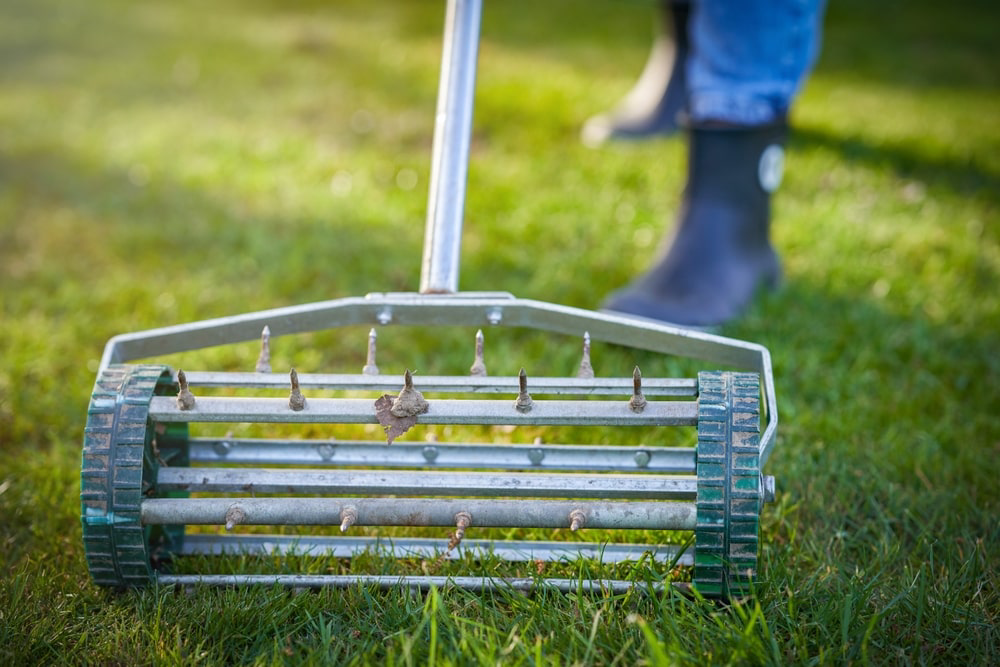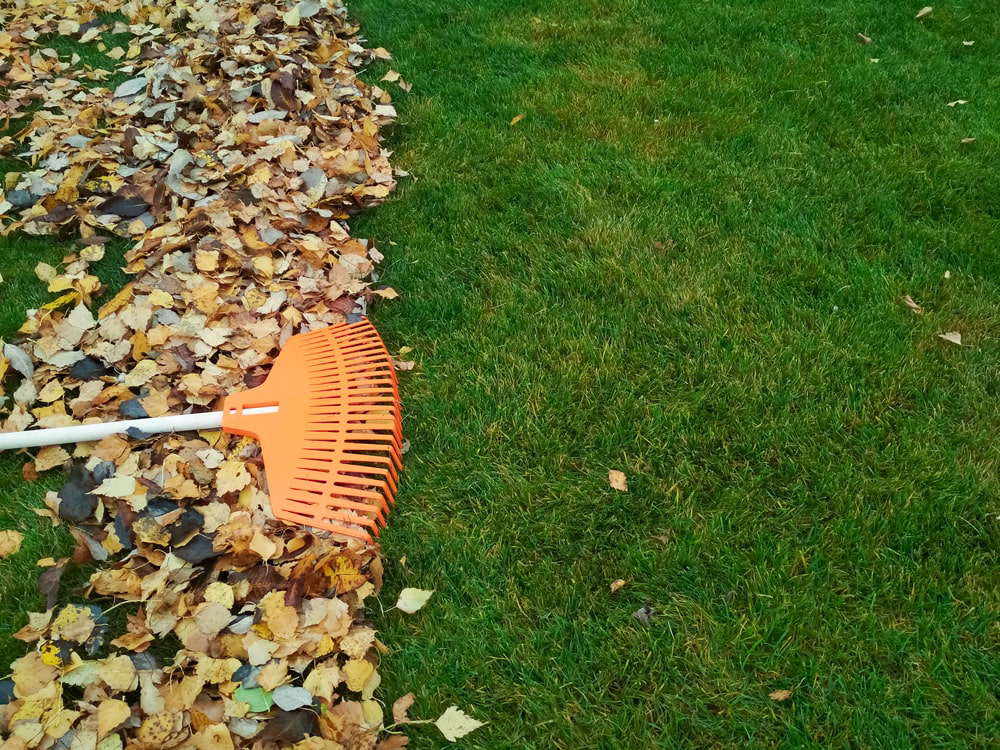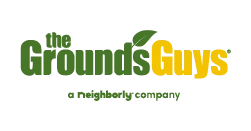How Often to Water Grass in the Fall

Last Updated June 1, 2023
The intensity of the heat and the sun during the summer months can wreak havoc on your lawn and outdoor plants—but consistent watering practices make it easier to maintain a lush green lawn throughout the growing season. However, once fall arrives, it is time to change the way you water your lawn to prepare for the colder weather ahead. Here are some of the best practices for fall lawn care, from the lawn care experts at The Grounds Guys.
Table of Contents:
- How Often to Water Grass in the Fall
- The Importance of Proper Lawn Watering in the Fall
- The Role of Temperature and Humidity in Fall Lawn Watering
- The Effects of Drought on Your Lawn in the Fall
- Tips for Conserving Water and Maintaining a Healthy Fall Lawn
- Fall Lawn Care Tips
- What to Do If Your Lawn Needs Extra Water in the Fall
How Often to Water Grass in the Fall
Property owners often ask, “how many times should I water my grass each week?” Generally speaking, most lawns remain healthy with 1 to 1.5 inches of water weekly, which can be distributed in one or two sessions. However, seasonal changes shift your lawn’s needs. So, how much should you water your lawn in the fall?
If you live in an area that has four distinct seasons, autumn is a time when temperatures begin to drop, the days become shorter, and the growth of your grass begins to slow down. With less heat and sunshine, your lawn needs less water. That doesn’t mean that you should stop watering altogether, though.
When it comes to how often to water grass in fall, here are some general rules to follow:
- Continue to provide supplemental moisture as needed until the ground is frozen.
- If your area receives one inch or more of precipitation per week, you don't need to water.
- During times when the weather is warm and dry, continue to water a few times a week.
- In the case of a new lawn or one that has been overseeded, maintain regular watering practices to establish roots and promote growth.
Here are some ways to determine if your lawn is receiving enough:
- Check the soil: if you can stick a screwdriver 6 inches deep into the soil, you're good to go.
- Multiply and divide: homeowners with sprinkler systems can multiply the square footage of their lawn by 0.62 gallons, then divide by the gallons per minute (flow rate). Check your sprinkler system’s ow rate.
- Measure the water with cans: if you water with sprinklers, place empty cans around the lawn. (Tuna or cat food cans work well.) Then measure the time it takes to accumulate 1 to 1.5 inches of water in each can.
The Importance of Proper Lawn Watering in the Fall
A long hot summer can take a toll on your grass. The good news is that watering your lawn in the fall can help it recover from the stress of summer. Fall's cooler temperatures make it the perfect time for your grass to bounce back to optimal health. Although the guidelines for how often to water grass change in the fall, you still need to water your lawn. Proper watering ensures your lawn stays healthy and strong entering the winter months. It will also help it thrive once spring arrives.
There are many ways to water your lawn, from sprinkler to smart watering systems and water hoses. For the best results, water your lawn during the early morning hours. Watering in the morning results in less evaporation due to the cooler temperatures. Conversely, avoid watering your grass at night, as it takes more time to dry, which can lead to fungus and other lawn diseases.
A properly working irrigation system will ensure your lawn gets the right amount of water. If your system needs repairs or an upgrade, The Grounds Guys can help. Our local experts specialize in irrigation system repairs, maintenance, and installation. And with our Neighborly Done Right Promise™, your satisfaction is guaranteed.
The Role of Temperature and Humidity in Fall Lawn Watering
Fall means cooler temperatures, which is great for lawns. However, you'll still want to water your grass until freezing temperatures arrive. When it's freezing outside, water won't penetrate the frozen ground, so avoid watering when the temperature is 30 degrees Fahrenheit or below.
If you live in a humid climate, it can help reduce water use. When there's humidity, there's moisture, which keeps your lawn hydrated longer. This means you can reduce watering by shaving a few minutes off the sprinkler timer and save water. When watering your lawn in the fall, use the weather to your advantage. If the forecast calls for rain, turn off your sprinklers and let nature do its thing. As long as your lawn is getting some water in the fall, the ‘how’ doesn’t matter.
The Effects of Drought on Your Lawn in the Fall
Irrigating your lawn is an important part of keeping it healthy and green. But there are times when there's just not enough water to go around. Drought can wreak havoc on a lawn. It can cause the grass to wilt and stay at after it's been stepped on by foot traffic. During dry seasons, your once lush, green grass will turn brown and its growth will slow considerably. Your grass will also thin out during these dry spells.
During a drought, your lawn is more vulnerable, so keep a close eye on it because this is when weeds can overtake your grass. Many types of grass can go up to six weeks without water. So, just because your grass is thinning and looks brown, it doesn't necessarily mean it's dying. Your lawn is just responding to current conditions and conserving nutrients until it receives water again.
Tips for Conserving Water and Maintaining a Healthy Fall Lawn
Water conservation helps to ensure there's enough water for everyone in the community, and preserves our natural resources. By conserving water, we can help reduce droughts. But water conservation doesn't mean your lawn has to suffer. In fact, you can keep your lawn green without using too much water. The following tips can help you conserve water and maintain a healthy lawn in the fall:
- Check for leaks in the irrigation system.
- Water early morning and at dusk, which are the best times to water your lawn because temperatures are at their lowest.
- Periodically measure how much water you're using.
- Water your lawn less often.
- Collect rainwater.
- Aerate your lawn.
- Remove weeds and select drought-resistant plants for your garden.
- Set your mower to a height of about 2 inches.
- Consider installing artificial turf.
Fall Lawn Care Tips
Along with managing your lawn’s water intake, follow our fall maintenance tips. These practices can keep your lawn beautiful in the cooler weather and help it to come back stronger and healthier next spring.
Mowing

Growth begins to slow down as the cooler temperatures set in and your lawn starts to prepare itself for dormancy throughout the winter. While it's important to continue mowing your lawn during this time you will need to make a few adjustments:
- Gradually lower the height of the mower until you reach a length between one and a half to two inches.
- Continue to mow if your grass continues growing.
Fertilizing

Cool-season grass will benefit from the application of fertilizer each fall, as the nutrients provided help to ensure vigorous growth in the spring. Use a slow-release granular fertilizer, and water the area well unless rainfall is imminent.
Weeding

Once the leaves and snow begin to fall, it can be difficult to eradicate future spring weeds. Begin tackling unwanted spring weeds early in the fall, when cooler temperatures and slow growth provide the ideal environment for them to take over your lawn.
Overseeding

Spreading seeds across your lawn each fall helps eliminate bare patches, deters the growth of weeds, and establishes new growth each spring. Always follow the package directions and apply at the recommended rate prior to the rst snowfall.
Aerating

When the soil in your lawn becomes tightly compacted, air, water, and nutrients are unable to penetrate it. Call the experts at The Grounds Guys® to schedule fall lawn aeration to promote healthy growth through each season.
Mulching/Raking

Whether you prefer to pull out the rake yourself or need help, call in the professionals for a thorough fall clean-up. A mulching mower is great for removing the leaves from your landscape, which is a vital part of fall lawn care. As soon as they fall from the tree, leaves begin to decompose, which can cause dead spots on your lawn, provide a home for damaging pests, and promote the growth of weeds.
What to Do If Your Lawn Needs Extra Water in the Fall
Sometimes your lawn needs a little extra water in the fall. But as mentioned, a lot of factors go into how often to water grass during fall. The key is not to overwater. Overwatering lawns can cause issues such as:
- Thatch
- Fungal growth
- Yellow grass
- Suffocation of grass
- Stunting of root growth
- Weed infestations
- Insects
- Standing puddles of water (a breeding ground for mosquitoes)
The best way to ensure that your lawn receives the right amount of water is to use professional lawn maintenance services. Your local lawn care and landscape pros at The Grounds Guys have the tools and expertise to keep your property looking great all year long. We provide free estimates and upfront pricing, so there are never any surprises. And with the Neighborly Done Right Promise™, your satisfaction is guaranteed. Contact us today to get started!
 Click to call
Click to call


